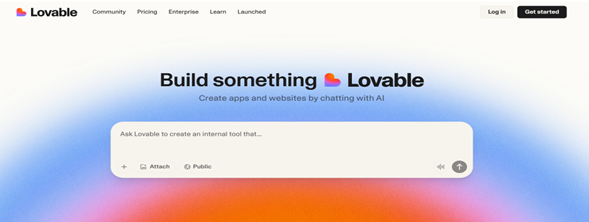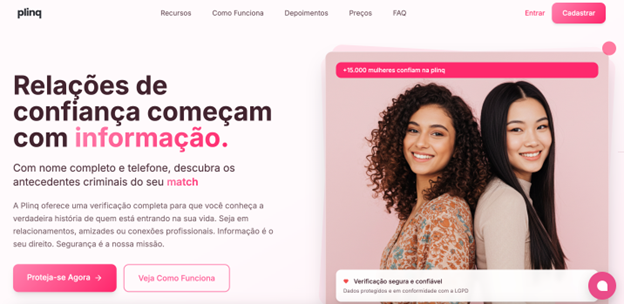Introduction – From blank page to a living website
Have you ever stared at a blank page in a website builder and felt anything but inspired? Templates rarely capture your brand’s personality, and the thought of wrangling CSS or backend logic can be a turn‑off. Imagine hiring an infinitely patient assistant who listens to your idea, drafts a complete front‑ and backend for it, then keeps refining it based on your feedback. That’s the promise of Lovable, a full‑stack AI website builder that converts natural‑language prompts into deployable websites. In this blog post we unpack how Lovable works, what makes it stand out, and when to use it.
What is Lovable?
Lovable is an AI‑powered development platform that creates full‑stack websites and apps from plain English prompts. Instead of dragging blocks onto a canvas, you describe what you want, and the system generates React‑based frontend code, backend logic (via Supabase), and a database schema. Users can then iterate through chat‑like conversations, refine the design or functionality, and eventually deploy or export the code to GitHub. Unlike many no‑code builders, Lovable produces real code that developers can edit, extend or even migrate away from. It aims to combine the speed of AI generation with the ownership and flexibility of traditional development.
How it works
- Describe your idea. You start by outlining your product or site in natural language – for example, “A membership management app with sign‑up forms, a dashboard and user roles.” Lovable interprets this prompt and scaffolds a full‑stack application, generating UI components, CRUD operations and authentication.
- Iterate via chat or agent mode. The platform offers two modes. In Agent Mode, Lovable autonomously explores your codebase, fixes issues, refactors code and even searches the web for documentation. Chat Mode lets you discuss features, debug logic and plan changes; when you’re satisfied, pressing “Implement the plan” triggers the agent to make the modifications.
- Visual edits and code adjustments. For quick design tweaks you can use the Visual Edits tool to change text, colors or fonts without prompting; selecting an element and editing it doesn’t consume credits. Users on paid plans can access Code Mode to directly edit the underlying code.
- Integrate and extend. Lovable integrates natively with GitHub for version control and Supabase for backend services. It also supports APIs like Stripe (payments), OpenAI, Clerk (authentication), and many more. You can import designs from Figma or connect to external APIs by providing OpenAPI specs.
- Deploy and publish. Once you’re happy, you can deploy to a Lovable subdomain or export the code to host on platforms like Netlify or Vercel. Custom domains are available on paid plans. GitHub integration ensures you own your code and can continue development outside Lovable.
The best/stand-out features:
- Instant & intuitive editing. Lovable offers live rendering, image input, instant undo and collaborative editing, making the build process feel interactive and forgiving. Selecting elements and editing them visually reduces reliance on prompts.
- Full‑stack generation from a single prompt. The platform generates both front-end and back-end code, including database logic and role‑based access controls.
- Agent‑assisted development. In Agent Mode, Lovable can autonomously debug, refactor, and even search for assets or documentation. Chat Mode allows planning and incremental changes.
- Beautiful, on‑brand designs. Lovable’s templates and styling tools produce polished layouts and human‑sounding copy. The Lummi “best AI website builders” review praises it for creating emotionally resonant, on‑brand websites and guiding users through voice and tone decisions.
- Support for any backend. With Supabase integration and an open approach to APIs, users can connect databases, authentication providers and third‑party services such as Stripe, Resend, and Twilio
- GitHub ownership. Code is synced to a private repository, giving teams full control over audits, extensions and future migrations.
- Flexible AI integration. Lovable AI supports models like Gemini 2.5 and GPT‑5 for features like summarization, chatbots, sentiment analysis and document Q&A. AI usage is billed separately but includes monthly credits.

When does Lovable shine?
Lovable stands out in contexts where speed, creativity, and accessibility are critical — especially for teams or individuals without coding experience who need to prototype, validate, or launch digital products quickly.
That’s what Sabrine Matos, from Curitiba, Brazil, did. She didn’t know how to code. She didn’t have a business plan either. But one tragic event changed everything: the femicide of a journalist murdered by a man with a history of violence — a history she was unaware of. Driven by anger and the desire to prevent other women from suffering the same fate, Sabrine decided to take action.
Without any technical background, she teamed up with her partner Felipe Bahia to turn an idea into reality. That idea became Plinq, a website that allows users to check criminal records using only a name, CPF (Brazilian ID), or phone number. The concept was simple yet powerful: to give people an easy and accessible way to protect themselves.
The biggest challenge? Neither of them knew how to program — and time was short.
That’s when they discovered Lovable, a no-code platform powered by artificial intelligence, which enables anyone to create fully functional digital products without writing a single line of code. With Lovable, the project came to life in less than two months.

The results exceeded all expectations:
Plinq surpassed 10,000 users shortly after its launch.
It went viral on social media, driven by stories of women who felt safer using the platform.
It gained media attention and became a symbol of social innovation built by ordinary citizens.
“We wanted something functional and fast, not perfect,” says Sabrine. “Lovable gave us the tools to act quickly — and sometimes, speed can save lives.”
Today, Plinq continues to grow and inspire other initiatives that use accessible technology and AI to create real social impact. More than just a digital product, the project represents what Lovable stands for: democratizing technology creation and empowering anyone to turn a meaningful idea into a real solution.
Limitations and Considerations
While Lovable enables rapid creation and iteration, it’s important to recognize that — like any no-code or AI-assisted platform — it comes with certain trade-offs. These limitations don’t diminish its value, but they highlight the importance of understanding when and how to use the tool most effectively. Below are some key considerations for teams and creators adopting Lovable in their workflows:
Aspect | Consideration |
Scalability | Excellent for MVPs and prototypes, but complex projects may require migration to custom code later on. |
Customization limits | Advanced behaviors or very specific UI components may be constrained by Lovable’s templates or the AI’s interpretation. |
Privacy and compliance | It’s important to assess where data is hosted, especially for sensitive projects (e.g., personal data and GDPR/LGPD compliance). |
AI accuracy | Although high-quality, auto-generated flows may still need manual refinement to meet usability and accessibility standards. |
Platform dependency | Maintenance outside Lovable’s ecosystem may be limited; it’s advisable to evaluate long-term flexibility. |
Many users (particularly those running frequent builds or large prototypes) report that although the tool is incredibly fast, they encountered real frustrations with the credit system, unexpected security concerns, and cost overruns. This implies that while the platform enables rapid iteration, you’ll want to carefully plan your usage if you go beyond simple prototypes.
Lovable shines as a bridge between ideas and execution, offering speed, accessibility, and creativity to non-technical creators and innovation teams alike. Its true strength lies in enabling people like Sabrine Matos — who turned an urgent social problem into a digital solution — to build impactful products without waiting for traditional development cycles. For those who value agility over perfection, Lovable represents not just a tool, but a new paradigm for building with AI.
Conclusion – is Lovable “lovable”?
Lovable demonstrates how far generative technology has come: with a well‑written prompt you can spin up a functional web app in minutes, iteratively refine it with the help of an AI agent and own the resulting code. It excels at rapid prototyping, small business sites, and internal tools. However, it isn’t a magic wand. Users should budget credit costs, expect some manual debugging, and remain vigilant about security and ethics. If used responsibly, Lovable can be a lovable ally in your development toolkit.
Have you experimented with Lovable or another AI website builder? Share your experiences with us and let us know how you balance speed, control and ethics when building with AI. As always, keep exploring, keep experimenting and keep building responsibly.


